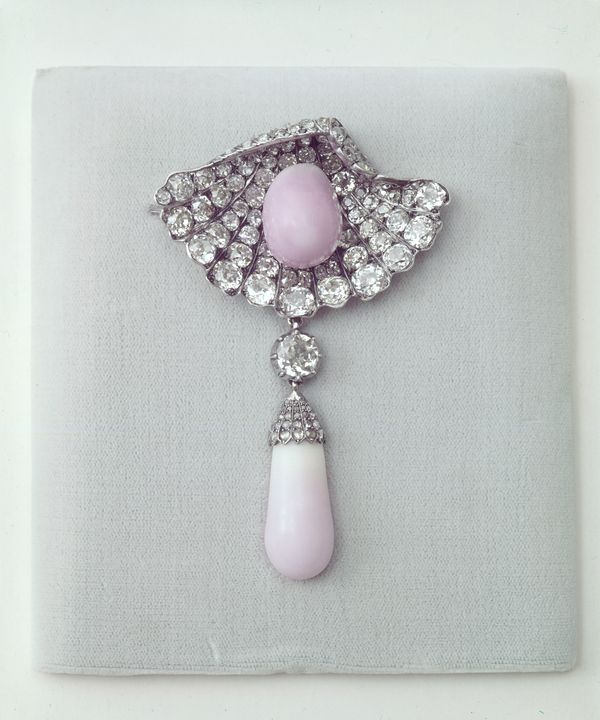Conch Pearl Brooch. All images courtesy of Alberto Petochi.
Fratelli Petochi was established some 136 years ago by brothers Alessandro and Giuseppe Petochi in Rome. The brothers, recognized for their strong attention to craftsmanship, quality and discretion, were ultimately "discovered" in 1904 by Prince Alessandro Torlonia who invited them to take a salon space in the Palazzo Torlonia, a famed 16th-century townhouse in the heart of Rome. It was this move that sealed the company's fate to become jeweler to some of Europe's most noble and powerful families, such as the Borghese, the Colonna, the Odescalchi, the Pallavicini and the House of Savoy, who granted Fratelli Petochi a royal warrant.
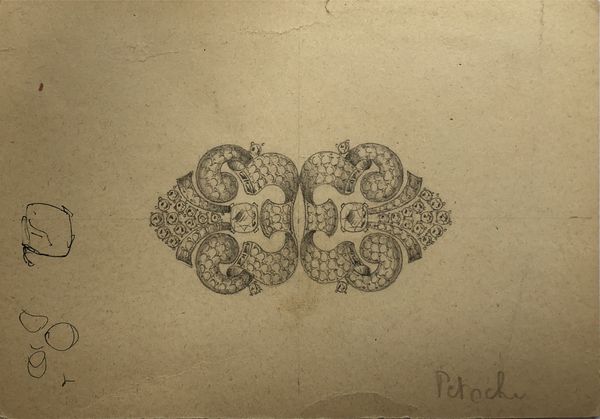
The illustrious beginnings of the house continued well into the modern age, as Petochi jewels counted not just amongst the royals but also foreign celebrities and movie stars like Audrey Hepburn. Hepburn reportedly stepped into the salon to repair a broken earring during the filming of Roman Holiday, and from that day forward became a long-serving fan of the house's designs.
Familial archives, coveted by the Petochi family, comprise a vast personal collection of records attesting to significant commissions and correspondence from the early 20th century. Original design sketches, watercolors and gouaches, together with a collection of photographs, demonstrate the great reach of the house's jewelry, objets de vertu and the reliquaries they made for the Vatican.
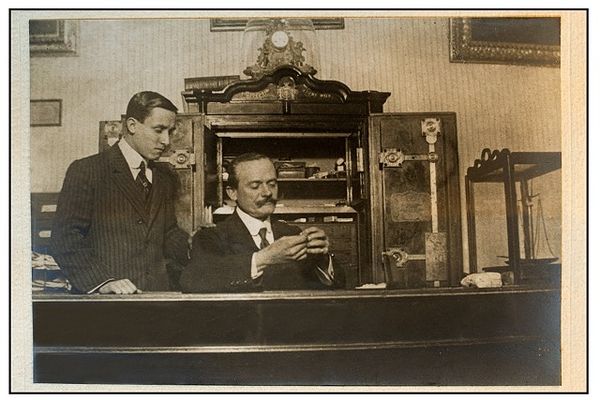

Founders Alessandro and Giuseppe Petochi and the workshop team at Palazzo Torlonia
It is these details and records which will soon make their way into the release of a book by the Petochi family, sharing with the world the nuances of the company's history and archives. The release of the book is to coincide with the re-launch of the brand under the auspices of sixth generation jeweler Alberto Petochi.
Watchmakers and jewelers have traditionally been family businesses. Over the last ten years, however, the world has seen some of the greatest family-run jewelry houses change hands through acquisitions by major international retail groups. The opportunity to be "consolidated" and "internationalized" is great—so too is the pressure, with tightly-held family jewelry houses finding themselves fighting bidding wars against deep-pocketed private equity players. The growth of "the brand," driven by new and emerging markets, together with the trends of fast fashion in a digital age, have brought pressure on remaining family-run companies to balance creative output with the need to remain responsive to these developments. It is against this backdrop that the importance of legacy towards the survivorship of family-run companies comes into play.
The workshops of Petochi became known as the training ground of Italy's best jewelers.
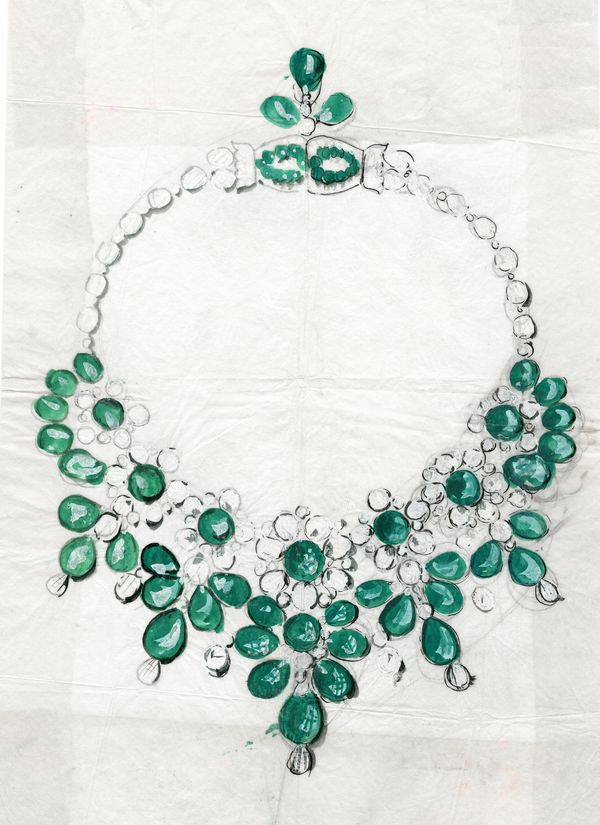
Illustration of the Mona Von Bismarck emerald necklace
According to Fratelli Petochi, to understand the staying power of the family-run business in the first place, one needs to trace roots back to the original intent of its founders themselves, and understand the company's response to the social and generational shifts which it has endured through war and revolution. He asserts that, as a starting point, the brothers Alessandro and Giuseppe had always foreseen that they would be succeeded in the business by multi-generations. It was with this in mind that multiple generations of the family continued to keep the business strong through the social changes brought by World War II and the significant events that followed the abolishment of the Italian monarchy. He maintains that during these times, the company adapted and then flourished again, experiencing a renewal in postwar supported by La Dolce Vita and the emergence of 'Cinecitta' and Hollywood.
Petochi cites the loyalty of the company's clientele, craftsmen and collaborators as the backbone of their enduring success. Post-abolition of the monarchy, the nobles and former royals too remained great supporters of the firm, with the upper floor of Petochi shielding them from the glare of watchful eyes and paparazzi, and allowing them to shop with discretion. The workshops of Petochi became known as the training ground of Italy's best jewelers; they produced masters of the trade, resulting in the enjoyment of longstanding that has continued with studios like Mortet and Franchi continuing to work with the family.
In addition to fortuitous support, Petochi posits the company's deep appreciation for jewelry and the crafting of extraordinary objects as the reason that the company has remained family-run and vital. He says that the values of the company have always been rooted in a deep passion for jewels and an innate respect for client and culture alike, which has been passed down from generation to generation.
In times where trends in luxury point to 30-40% of market share being owned by big brands by 2020, the pressure to innovate is palpable. Petochi admits that while innovation and creative design are the cornerstones to keeping the brand afloat, trends and new design technology also provide great opportunity for innovation and growth. The ability to develop a signature—a 'raison d'être—that reflects both the history of the past and the company's relevance today, has enabled it to answer the call of modern-day buyers who are more demanding, knowledgeable and interested in ethical materials and unique design than ever before. With tradition and heritage infused into each new piece, the company is able to preserve the integrity of the brand and its creations against the drag of mass production brought by fast fashion and the co-mingling of high-end apparel into the realm of fine jewelry.
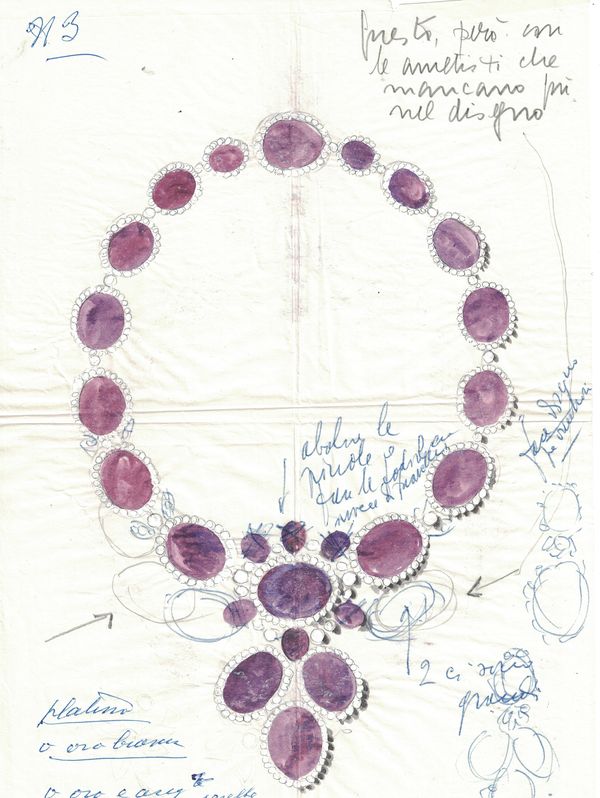
Illustration of the Princess Mafalda amethyst necklace
Petochi welcomes the pressure of shifting trends. He rightly contends that shifting trends bring the need for rapid change and says that while fine jewelry by virtue of its rarity and value is not affected itself by the need for volume, the influence of trends often provides new inspiration. It's the awareness of the jewelry customer of the value of long-lasting jewelry that provides a buffer between fast fashion and fine jewelry. According to Petochi, respect for true design, creation, craftsmanship and rarity lends itself to "the resistance."
Petochi welcomes the pressure of shifting trends.
Social media too, Petochi contends, has brought with it great opportunities. The ability to re-tell the heritage of the family and company, as well as the wealth of jewelry-inspired stories through every social and cultural change, make for great content. At the same time, the company is able to communicate new stories and designs in this digital era. Petochi admits that "a combination-platter approach" is what is necessary these days, meaning that while the sensory experience of buying from brick-and-mortar stores still matters to jewelry customers and must be preserved, there is an increasing number of consumers who are adept to spending on high-value items online. This is a trend that Petochi likens to clients "calling in their bids" at auction houses; as the demographics of the customer changes, buyers who are more adept at gathering information and inspiration online have emerged. Petochi notes that this has created an excellent avenue for the company as a brand.
It seems that the future of Petochi rests in its heritage—a strong foundation of creativity and evolution. Petochi says "this creative past will be carried along while evolving with the exciting innovations in jewelry making."
In speaking with Alberto Petochi, it's also clear that the legacy of this famous old jewelry house is in forward-thinking and adaptable hands, reflecting the very foundation itself from which the company both began and has endured.
